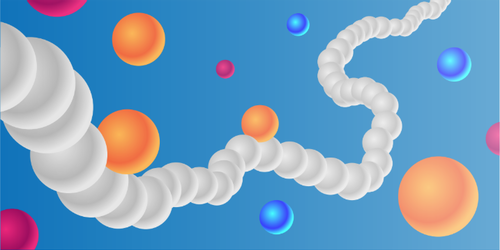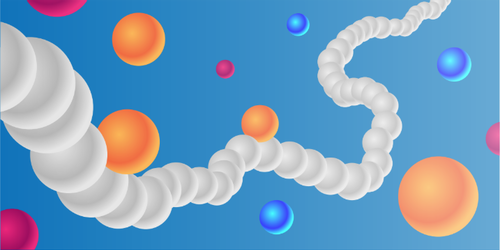Perturbing Polymers with Salty Solutions
Biological environments like the human body contain many examples of charged polymers swimming in a salty solution. Electrostatic interactions with the ions in the solution make these polymers bend and twist into various shapes, but experts do not understand the process in detail. Now, with a model that describes the relationship between a charged polymer’s shape and its environment, Sarah Innes-Gold of the University of California, Santa Barbara, and colleagues have shown that the spatial distribution of ions matters as much as their concentration.
The researchers based their model on simulations and experiments involving 100,000-atom strands of hyaluronic acid—a molecule of intermediate flexibility, and an important component of the connective tissue that supports the shape and function of biological cells. The team suspended individual polymer strands between a surface and a magnetic bead. Pulling on the bead using a magnetic field, Innes-Gold and colleagues measured the force required to stretch the polymers to a given length when immersed in a solution of varying ion concentration. They also simulated the measurement by modeling the polymer as 450 alternately charged and neutral segments interacting in a solution containing multiple types of ions.
Until now, models have predicted that a charged polymer would change shape continuously as the ion concentration is varied. The researchers found, however, that the polymer’s shape stays constant over a range of ion concentrations. They attribute this to a region of high ion concentration that wraps around the polymer like a jacket, protecting the polymer from ion-concentration changes. This “ion-jacket” model could, they say, be extended to explain how other polymers, such as RNA and proteins, change shape inside the body.
This research is published in Physical Review Letters.
–Sophia Chen
Sophia Chen is a freelance science writer based in Tucson, Arizona.





